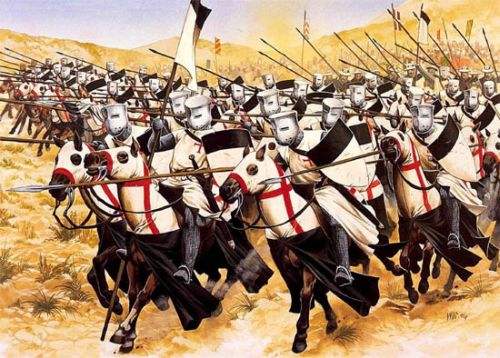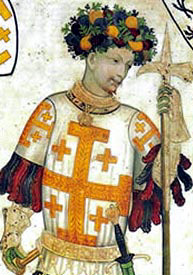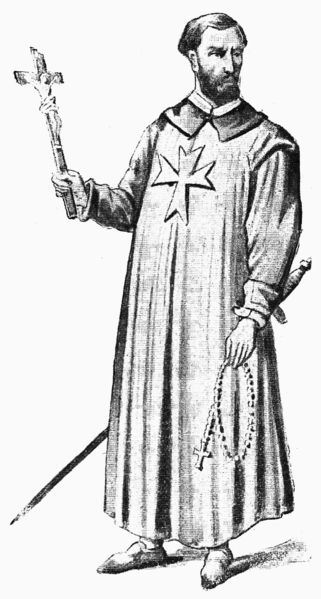Religion had sanctified the perils and the violences of war. Every monastery of Palestine was a fortress, in which the din of arms was mingled with the voice of prayer. Humble cenobites sought glory in fight; the canons, instituted by Godfrey [of Bouillon] to pray near the holy tomb, after the example of the Hospitallers and the Templars, had clothed themselves with the casque and the cuirass, and, under the name of the Knights of the Holy Sepulcher, distinguished themselves amongst the soldiers of Christ.
The glory of these military orders was soon spread throughout the Christian world. Their renown penetrated even to the isles and the most remote nations of the West. All who had sins to expiate hastened to the holy city to share the labors of the Christian warriors. Crowds of men, who had devastated their own country, came to defend the kingdom of Jerusalem, and take part in the perils of the most firm defenders of the faith.
 There was not an illustrious family in Europe which did not send at least one knight to the military orders of Palestine. Princes even enrolled themselves in this holy militia, and laid aside the insignia of their dignity to assume the red coat of arms of the Hospitallers, or the white mantle of the knights of the Temple. In all the nations of the West castles and cities were bestowed upon them, which offered an asylum and succor to pilgrims, and became auxiliaries to the kingdom of Jerusalem. As monks, as soldiers of Christ, they were remembered in every will, and not unfrequently became the heirs of monarchs and princes.
There was not an illustrious family in Europe which did not send at least one knight to the military orders of Palestine. Princes even enrolled themselves in this holy militia, and laid aside the insignia of their dignity to assume the red coat of arms of the Hospitallers, or the white mantle of the knights of the Temple. In all the nations of the West castles and cities were bestowed upon them, which offered an asylum and succor to pilgrims, and became auxiliaries to the kingdom of Jerusalem. As monks, as soldiers of Christ, they were remembered in every will, and not unfrequently became the heirs of monarchs and princes.
Joseph François Michaud, History of the Crusades, trans. W. Robson (London: George Routledge and Co., 1852), 1:307–8.
Short Stories on Honor, Chivalry, and the World of Nobility—no. 769
Click Here to Read more on the History of the Crusades! Part I here.











